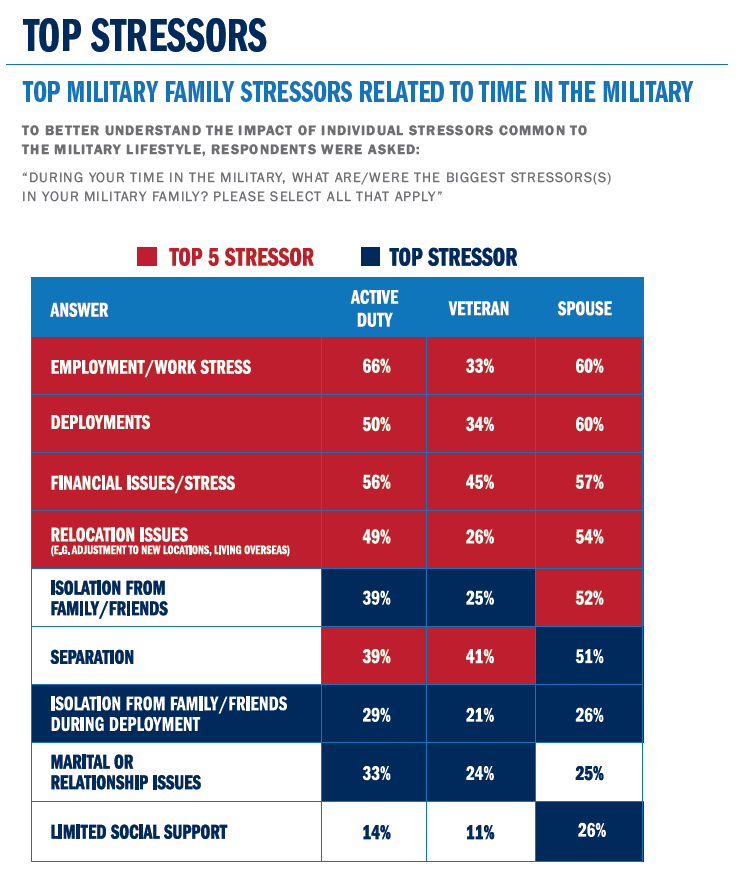In many ways, military families are just like their civilian counterparts: They fret about their pay and retirement benefits, they often need dual incomes to make ends meet, they worry about their kids’ childcare and education, they suffer marital problems, and they want to put down roots.
Since the advent of the all-volunteer force in 1973, family life has become increasingly important to the military, with 68 percent of officers and 49 percent of enlisted personnel married, compared with just 40 percent of enlisted personnel married before the advent of the all-volunteer force.
Related: Army’s Plans to Cut 60,000 Could Be a Major Blow to the Economy
But the military is currently experiencing major changes, including downsizing and increased deployments to Middle East hot spots, and the nation’s military personnel and their families are struggling to cope with these pressures.
The annual Blue Star Families Military Family Lifestyle survey provides a comprehensive overview of the experiences and challenges being experienced by military families. This year’s survey included more than 6,200 military families, including active duty members and veterans.
Among the major findings is widespread uncertainty and nervousness about job security, retirement benefits, financial security and employment prospects for service member and their spouses. And there is good reason for their concern.
Related: America’s Vets: More Jobs, More Help, More Suicides
The Army has disclosed that it plans to shed 60,000 soldiers and civilian workers from its ranks over the next two years, and the Marines and other services also have plans to downsize. House and Senate lawmakers, meanwhile, are acting on plans to replace the current 20-year, all-or-nothing retirement system with a new deal that will provide all future troops with some retirement benefits from 401(k)-like investment plans, albeit less than they could get under a defined benefit program.
Not surprisingly, up-tempo training and deployment overseas constitutes the biggest source of work-related and family stress. According to the report, 60 percent of military spouses and 50 percent of active duty service members interviewed identified deployment as the top stressor.
What’s more, over half of the respondents said they have been deployed three or more times since September 11, 2001, while 37 percent reported serving over 24 months of deployment since the 9/11 terrorist attacks.
“Separations and deployments are truly difficult and our children feel the loss that civilian families cannot even fathom,” according to a member of one military family interviewed for the study. “Their parent is NOT away on a business trip, and our children unfortunately are acutely aware of the risk their deployed parent faces. Watching the news/current events and even harsh realities of children discussing the current events, becomes unimaginable while the parent is deployed.”
Related: Congress Finally Confronts Veteran Suicide Epidemic
Here is a list of top stressors for military families:






